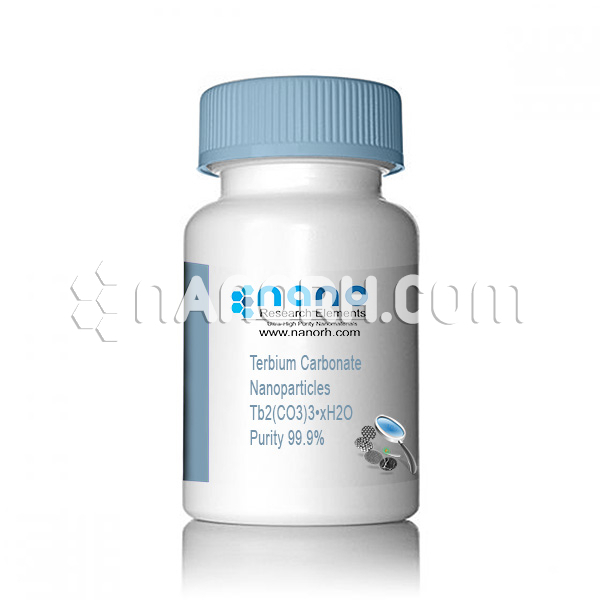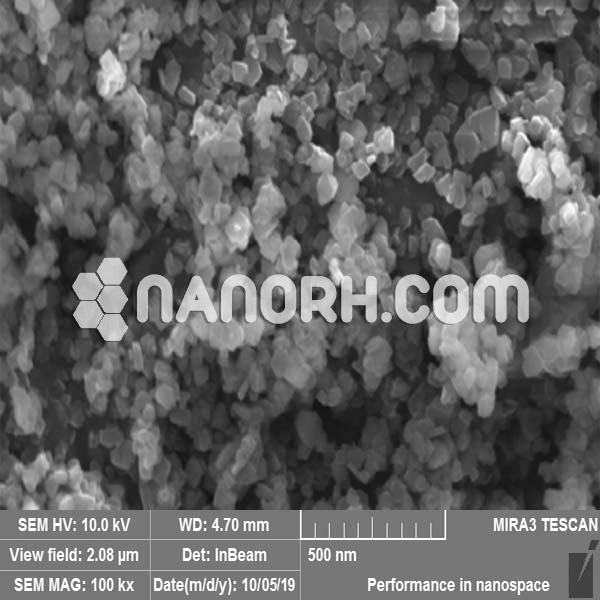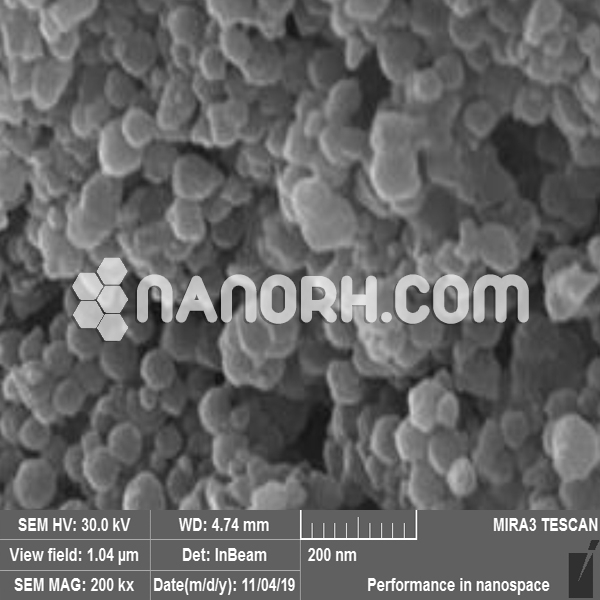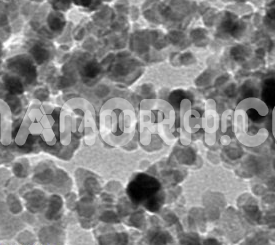| Terbium Carbonate Nanoparticles | |
| Product No | NRE-5220 |
| CAS | 6067-34-1 |
| Purity | 99.9% |
| Formula | Tb2(CO3)3•xH2O |
| APS | <100 nm (can be customized) |
| Color | White |
| Molecular Weight | 490.91 g/mol |
| Density | NA |
| Melting Point | NA |
| Boiling Point | NA |
Terbium Carbonate Nanoparticles
Applications
Luminescent and Optoelectronic Devices:
Phosphorescent Materials: Due to their inherent green fluorescence properties, terbium carbonate nanoparticles are used in luminescent applications such as phosphors for lighting, displays, and television screens. These nanoparticles are integral to the production of high-efficiency LED lights and energy-efficient displays.
Lasers: Tb₂(CO₃)₃ nanoparticles are also used in laser technologies, where their ability to emit bright and stable fluorescence under UV light makes them suitable for laser materials in various industries, including telecommunications and medical devices.
Bioimaging and Diagnostics:
Fluorescent Probes: Tb₂(CO₃)₃ nanoparticles are employed as fluorescent probes for biological imaging due to their strong green luminescence under UV light. They can be used to label biomolecules, cells, or tissues, making them valuable tools in diagnostic imaging, such as fluorescence microscopy or flow cytometry.
In Vivo Imaging: Their biocompatibility and brightness make Tb₂(CO₃)₃ nanoparticles suitable for in vivo imaging applications, helping track the movement of drugs or cells within living organisms.
Sensor Technology:
Chemical Sensors: Terbium carbonate nanoparticles are used in sensor technologies to detect a range of chemicals, gases, and environmental pollutants. Their luminescence can change in response to environmental conditions such as pH, temperature, or the presence of specific ions, enabling them to function as sensitive probes in chemical sensors.
Biosensors: Tb₂(CO₃)₃ nanoparticles can be incorporated into biosensors for detecting biological molecules such as proteins, nucleic acids, or pathogens. Their luminescent properties make them particularly effective in fluorescence-based biosensing applications.
Catalysis:
Catalyst Supports: Terbium carbonate nanoparticles are being investigated for use as catalyst supports in various chemical reactions, including those involved in organic synthesis and energy production.




